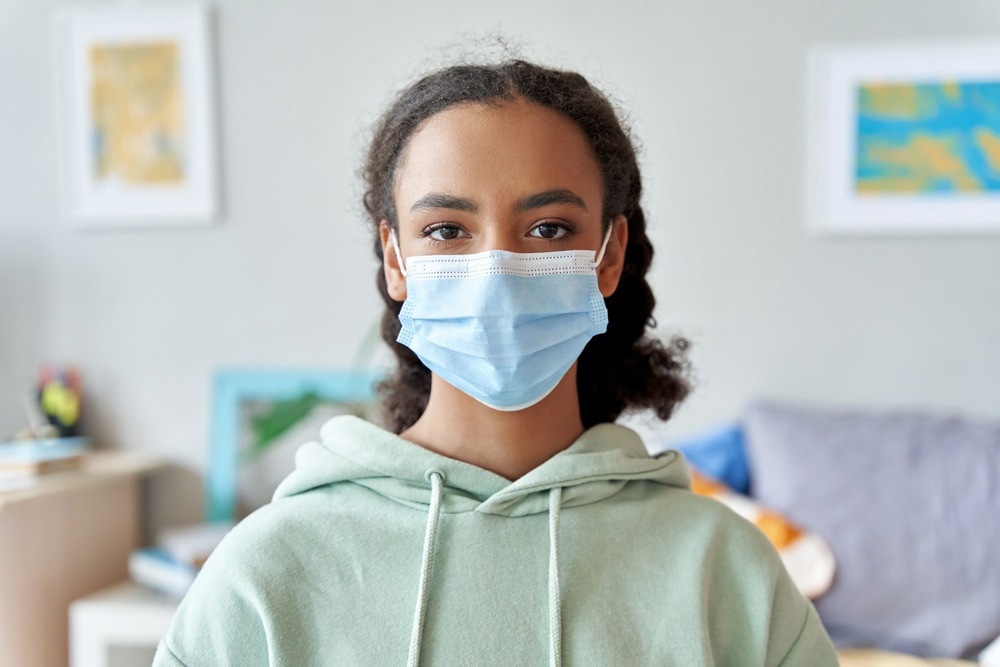A recent study posted to the medRxiv* server systematically reviewed coronavirus disease 2019 (COVID-19) among adolescents and children due to severe acute respiratory syndrome coronavirus 2 (SARS-CoV-2) variants of concern (VOCs).
 Study: The role of SARS-CoV-2 variants of concern in children and adolescents with COVID-19: a systematic review. Image Credit: Ground Picture/Shutterstock
Study: The role of SARS-CoV-2 variants of concern in children and adolescents with COVID-19: a systematic review. Image Credit: Ground Picture/Shutterstock

 *Important notice: medRxiv publishes preliminary scientific reports that are not peer-reviewed and, therefore, should not be regarded as conclusive, guide clinical practice/health-related behavior, or treated as established information.
*Important notice: medRxiv publishes preliminary scientific reports that are not peer-reviewed and, therefore, should not be regarded as conclusive, guide clinical practice/health-related behavior, or treated as established information.
Background
SARS-CoV-2 variants have acquired mutations with different phenotypic properties, including higher transmissibility, immune resistance, or changes in COVID-19 severity. Vaccines against SARS-CoV-2 were introduced when the first VOCs were circulating. VOC infections might result in different clinical presentations among children/adolescents compared to prior SARS-CoV-2 lineages.
About the study
In the present study, researchers conducted a systematic review of COVID-19 caused by SARS-CoV-2 VOCs in adolescents and children. They searched for relevant articles in the COVID-19 open-access project (COAP) and PubMed databases. Observational epidemiologic and modeling studies were eligible without restrictions on language or geography.
Data on study design, population, setting, outcomes, age groups, publication characteristics, and prevalent VOCs were extracted by one reviewer and verified by another. The risk of bias was assessed using published tools, and the relevance and credibility of modeling studies were evaluated using a published checklist.
The team aimed to address the following questions about COVID-19 in adolescents and children – SARS-CoV-2 VOC-associated symptoms and if they differed from those due to wildtype SARS-CoV-2, risk factors for severe illness due to VOCs, and the differences in the risks of VOC infection/transmission and long COVID due to VOCs between adults, adolescents, and children.
Findings
The team screened more than 2,400 studies published until May 9, 2022, and included 53 articles for analysis. Most studies (89%) were conducted in high-income countries, and 11% were from upper-middle-income countries. Many studies had a moderate risk of bias. Eighteen studies described symptoms in adolescents and children due to SARS-CoV-2 Alpha, Delta, Gamma, or Omicron.
No symptom could be consistently attributed to a particular VOC, and the symptom frequencies due to VOCs were not different from the pre-VOC period. The incidence of croup cases increased during the Omicron wave relative to the pre-Omicron period. None of the included studies explored symptoms due to the Beta variant.
Twenty-three studies described the severity of VOC infections. VOC-infected adolescents and children primarily developed a mild disease. More severe infections were reported with the Gamma VOC; Omicron infections were less severe than Delta infections. Five studies noted that the Alpha variant was not associated with a more severe illness than non-VOCs.
The rates of hospitalization and admission to an intensive care unit (ICU) increased for Gamma infection than for non-VOCs in Brazil and the United States (US). Although eight studies compared COVID-19 severity between Delta and pre-Delta periods, severity differences could not be assessed due to inconsistencies in reported data. No study investigated how COVID-19 symptoms and severity differed across age groups and between adolescents/children and adults with the same VOC infection.
One study compared the risk factors for severe COVID-19 due to infection with Delta or Omicron in adolescents/children. It reported that individuals under 18 with at least one comorbidity were at a higher risk for moderate/severe disease due to infection with Omicron but not Delta. Another study reported a higher risk of severe COVID-19 in children aged 5 – 11 with obesity or diabetes.
The risk of VOC infection was assessed in 15 studies during Alpha, Delta, or Omicron predominance. Infection- or vaccine-induced immunity was an important factor in determining VOC infection risk. Six studies reported a lower attack rate for Alpha infection in younger children (< 6) than adults, although the vaccination status of participants was not defined. Another study found that attack rates in children aged four or younger decreased with increasing age.
Likewise, 15 studies reported on the risk of transmission when Alpha, Delta, or Omicron VOCs were circulating. The risk of transmission with a VOC was generally higher for younger pediatric populations across many studies. Only a few studies described long-term COVID-19 symptoms. The risk of symptoms lingering for more than 28 days was similar among children infected with SARS-CoV-2 Alpha or Delta. It was also comparable between younger and older children infected with the same variant.
Conclusions
The study indicated that SARS-CoV-2 VOC infection patterns in children/adolescents were comparable to those in the pre-VOC period. Identification of factors associated with specific VOCs was limited due to inconsistent data on vaccination status and the levels of predominant SARS-CoV-2. Future studies should report on the vaccination status of participants and factors that impact transmission and hospitalization.

 *Important notice: medRxiv publishes preliminary scientific reports that are not peer-reviewed and, therefore, should not be regarded as conclusive, guide clinical practice/health-related behavior, or treated as established information.
*Important notice: medRxiv publishes preliminary scientific reports that are not peer-reviewed and, therefore, should not be regarded as conclusive, guide clinical practice/health-related behavior, or treated as established information.